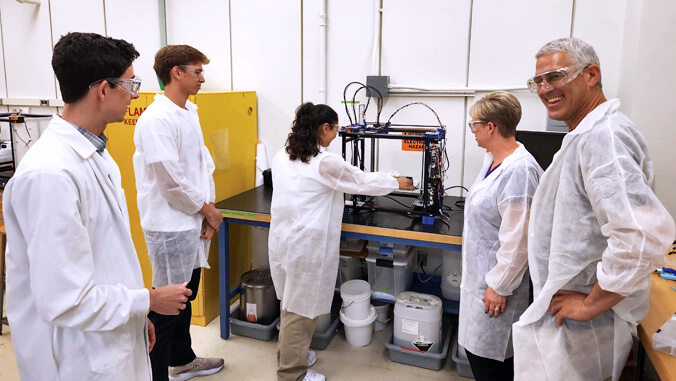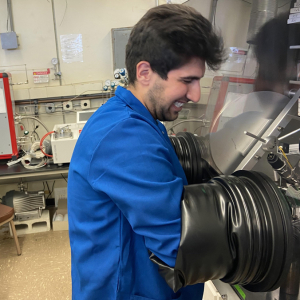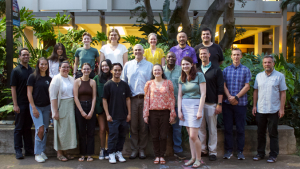
A team led by University of Hawaiʻi at Mānoa researchers aims to use a $4.2 million grant from the National Science Foundation to tackle clean energy needs on multiple fronts from sustainable solutions and integrating Native Hawaiian knowledge to engaging with high school students.
Led by UH Mānoa researcher Godwin Severa, the Materials Research and Education Consortium, in partnership with the National Science Foundation (NSF) Materials Research Science and Engineering Center at the University of Washington, will focus on challenges facing Hawaiʻi, including reliance on imported fuels for electricity and transportation, resource and waste management, soil erosion and ocean contamination exacerbated by climate change.

“I am excited about increasing the number of diverse students trained in materials research,” said Severa, who is a faculty member in the Hawaiʻi Institute of Geophysics and Planetology (HIGP) at the UH Mānoa School of Ocean and Earth Science and Technology (SOEST). “The students trained on this project will increase Hawaiʻi’s materials science workforce in the future, helping develop critical materials towards reducing our dependence on costly imported fuels for electricity and transportation and mitigating the effects of soil erosion and ocean contamination.”
Scientific breakthroughs, real-world solutions
“Our focus on novel materials within the project is all about turning scientific breakthroughs into real-world environmental solutions,” added Przemyslaw Dera, project co-investigator and HIGP researcher. “We are committed to developing materials that will contribute to sustainable technologies and help protect our planet.”
This project builds on the success of the team’s previous material science seed project at UH Mānoa, which engaged Oʻahu middle/high school students, more than 20 UH Mānoa students, and six faculty through materials science research, education and outreach activities.
“This NSF funding will help grow our course offerings and support development of certificate and concentration programs in materials science through supporting training for students at all levels,” said Department of Mechanical Engineering Associate Professor and Department Chair Joseph Brown, also a project co-investigator. “I am excited to see our students gain experience in building cutting-edge automation and AI tools to address challenges in materials processing R&D experiments.”

“We are especially excited to give Consortium students the opportunity to expand their horizons,” said Hope Ishii, project co-investigator and astromaterials research scientist and affiliate faculty in SOEST. “We will create opportunities for them to use cutting-edge transmission electron microscopy on their own samples in a national laboratory, take tours at three national laboratories in California, and meet materials science experts.”
In continuing to work with Hawaiʻi middle and high schools, Kamehameha Schools, UH community colleges and U.S. national facilities, the team will broaden materials science education in Hawaiʻi. To increase the place-based value of curriculum, they will develop K-12 workshops and new UH Mānoa courses that incorporate Hawaiian cultural perspectives.
For more information, see SOEST’s website.
–By Marcie Grabowski

